Did you know that 55% of new investors abandon trading within their first year? Finding the best stock ticker software can make all the difference. What features should beginners prioritize when selecting their first platform?
The right tools transform market complexity into opportunity. The best stock ticker software combines intuitive interfaces with powerful analytics, helping novices navigate confidently. With real-time data and customizable features, these platforms build the foundation for successful investing journeys.
- Best stock ticker software combines intuitive interfaces for beginners
- Free options like Yahoo Finance and TradingView offer essential features without cost
- Paid platforms provide advanced tools and faster data streams for serious traders
- Charting capabilities analysis tools are fundamental for informed decisions
- Real-time streaming data is crucial for active trading, while snapshots suit long-term investing
- Choose software that matches your trading style and evolves with your skills
Best Stock Ticker Software Options for Beginners
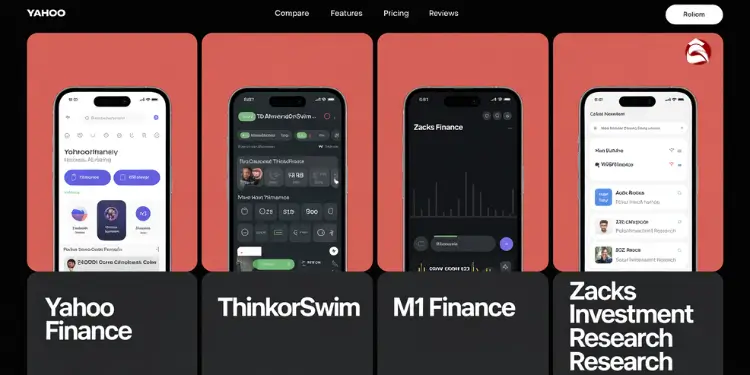
Selecting the best stock ticker software as a beginner is key to building a strong market foundation. The ideal platforms offer intuitive navigation, essential data, and educational resources, ensuring a smooth learning curve. Below are top options tailored for new investors seeking simplicity and reliability.
- Yahoo Finance: A widely-used free platform providing real-time quotes, interactive charts, and comprehensive financial news, making it perfect for beginners to track stocks and market trends.
- TD Ameritrade’s thinkorswim: Offers a powerful yet user-friendly interface with paper trading, extensive educational resources, and advanced tools that grow with your skills.
- M1 Finance: Combines a sleek interface with automated investing, allowing beginners to create custom portfolios and track performance without complex trading jargon.
- Zacks Investment Research: Features strong stock screening tools, in-depth analysis, and clear recommendations, helping new investors make informed decisions.
Best Free Stock Ticker Software
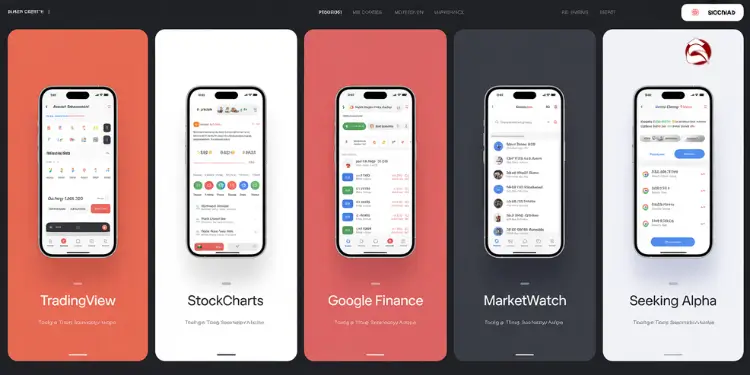
For beginners seeking cost-effective solutions, the best free stock ticker software provides essential market data and analysis tools without financial commitment. These platforms offer real-time quotes, basic charting capabilities, and portfolio tracking features, making them ideal for those starting their investment journey. While free versions may have limitations compared to premium offerings, they still deliver substantial value for novice traders.
- TradingView: Offers a robust free tier with interactive charts, numerous technical indicators, and a social community for sharing trading ideas.
- StockCharts: Provides free basic charting with essential technical analysis tools and educational resources for beginners.
- Google Finance: Delivers real-time stock quotes, portfolio tracking, and market news with a clean, intuitive interface.
- MarketWatch: Features comprehensive market data, news updates, and portfolio tracking tools, all available at no cost.
- Seeking Alpha: Offers free access to market analysis, earnings call transcripts, and basic portfolio tracking capabilities.
Studies show that free trading platforms can be effective for beginners, with 80% of novice traders starting with no-cost options. However, free platforms typically have limited technical indicators and delayed data, which can impact trading performance. Ref.: “Quantified Strategies. (2025). Day Trading Statistics 2025: The Hard Truth.” [!]
Paid Software and Their Benefits
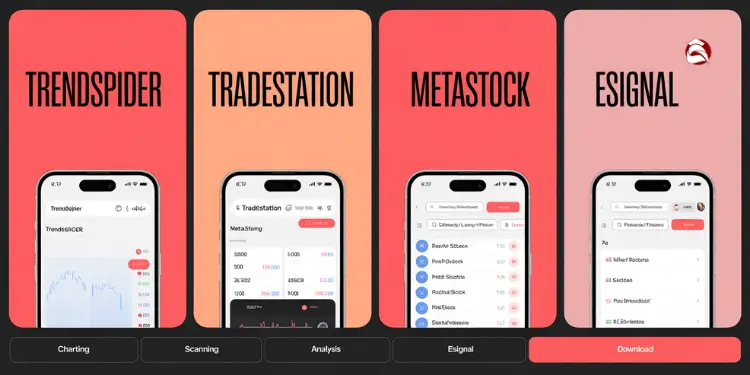
Paid stock ticker software typically delivers enhanced functionality, superior support, and advanced features that justify the investment for serious traders. These platforms often provide more in-depth market analysis, faster data streams, and sophisticated customization options that can significantly improve trading performance and strategy development.
- TrendSpider: Automates technical analysis with AI-powered trendline detection and multi-timeframe charting, ideal for beginners seeking advanced tools without complex manual setup.
- TradeStation: Combines powerful charting, backtesting capabilities, and direct access to markets, offering a comprehensive ecosystem for traders ready to elevate their strategies.
- MetaStock: Provides robust technical analysis tools and expert advisors, helping users identify trading opportunities through systematic scanning and pattern recognition.
- eSignal: Delivers high-speed real-time data, advanced charting, and customizable alerts, catering to traders who require precise market information and rapid execution capabilities.
While paid trading software offers advanced features, research indicates that only 13% of day traders maintain consistent profitability over six months. The effectiveness of paid tools depends heavily on the trader’s skill level and market knowledge. Ref.: “Tradeciety. (2025). Why Most Traders Lose Money – 24 Surprising Statistics.” [!]
“You Might Also Like: How to Prioritize Multiple Investment Goals as a Beginner“
Charting Capabilities and Technical Analysis Tools
The Charting capabilities and technical analysis tools are fundamental for beginners aiming to understand market movements and make informed trading decisions. These features allow users to visualize price patterns, assess momentum, and identify potential entry and exit points with confidence. By leveraging the right tools, new traders can develop their analytical skills and enhance their market strategies over time.
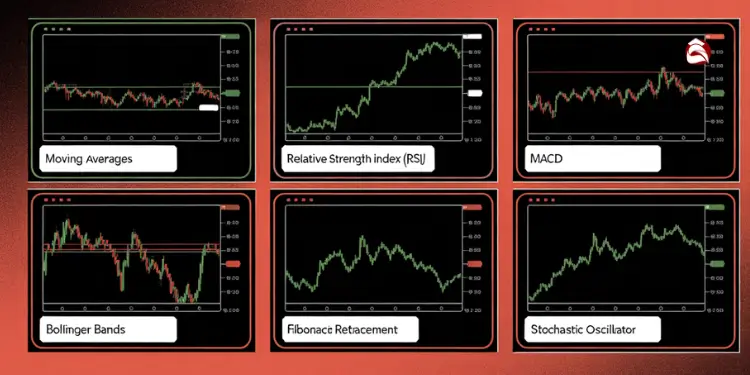
| Technical Analysis Tool | Description |
|---|---|
| Moving Averages | Smooths price data to identify trends over specific periods. |
| Relative Strength Index (RSI) | Measures the speed and change of price movements to identify overbought or oversold conditions. |
| MACD | Tracks the relationship between two moving averages to signal momentum shifts. |
| Bollinger Bands | Uses a moving average with two standard deviations to highlight volatility and potential price levels. |
| Fibonacci Retracement | Identifies potential support and resistance levels using Fibonacci ratios. |
| Stochastic Oscillator | Compares a closing price to a range of prices to determine momentum and trend strength. |
Technical analysis tools show varying effectiveness across markets. A 2018 study of BRICS markets found that automated moving-average trading systems beat buy-and-hold benchmarks, with particularly strong results in Russia and India. Ref.: “NewTrading.io. (2025). Does Technical Analysis Work? Here’s What Research Says.” [!]
“Related Articles: Examples of Common Investment Goals for Beginners“
Popular Stock Tracking Platforms
Several popular stock tracking platforms cater to different needs and skill levels. These platforms include charting platform tools like TradingView, Finviz, Stockcharts, and brokerages such as Webull and Tradestation. Each offers a unique set of features and tools to track stocks, perform analysis, and execute trades. Selecting the right platform depends on your individual trading style and investment goals.
TradingView: A Comprehensive Charting Platform

The TradingView stands out as a comprehensive charting platform, offering a wide array of technical analysis tools and charting capabilities. It is considered by many as the best charting platform, featuring a customizable interface, real-time market data, and a vast library of technical indicators. It provides stock screeners available on the platform, as well as drawing tools and advanced technical analysis. TradingView allows users to track stocks, customize metrics, and analyze intraday data, making it an excellent choice for beginners and experienced traders alike.
Finviz: A Powerful Stock Screener
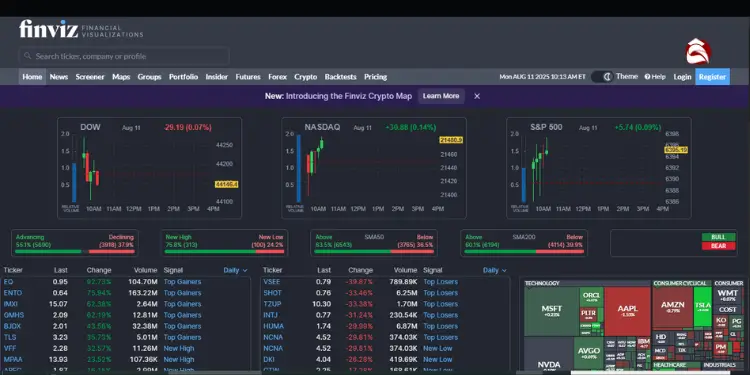
The Finviz is a strong choice as a stock screener, offering a comprehensive platform for market data and analysis tools. Its customizable interface allows beginners to easily track stocks and access real-time market news. As the best stock option for those seeking the best free stock resource, Finviz’s stock screeners available provide a range of metrics and data for technical analysis, making it an invaluable tool for building a watchlist.
Webull and Interactive Brokers: Broker-Specific Tools

The Webull and Interactive Brokers offer broker-specific tools that integrate directly with your brokerage account. Webull provides a user-friendly charting platform and real-time market data, while Interactive Brokers offers advanced technical analysis tools and charting capabilities. Both platforms allow users to track stocks, set alerts, and monitor their portfolio performance. For beginners, Webull’s intuitive design is often favored as the best app.
Using Google Sheets for Stock Tracking

Google Sheets offers a flexible and accessible solution for tracking stocks without specialized software. Its built-in GOOGLEFINANCE function transforms spreadsheets into powerful portfolio monitoring tools.
- Open a new Google Sheet and create column headers for Stock Symbol, Company Name, Current Price, and Change.
- In the Stock Symbol column, enter the ticker symbols of the stocks you want to track (e.g., AAPL, MSFT, GOOGL).
- Use the formula =GOOGLEFINANCE(A2, “price”) in the Current Price column to fetch real-time stock prices.
- Add =GOOGLEFINANCE(A2, “name”) in the Company Name column to automatically populate company names.
- Calculate daily changes with =GOOGLEFINANCE(A2, “changepct”) to see percentage changes.
- Create additional columns for historical data using =GOOGLEFINANCE(A2, “high”, DATE(2023,1,1), DATE(2023,12,31)) for specific date ranges.
- Format your sheet with conditional formatting to highlight significant price movements or changes.
- Set up automatic daily refreshes through the Data > Refresh options to ensure your data stays current.
Installation requirements across operating systems

Before installing stock ticker software, it’s essential to understand the system requirements to ensure smooth operation. Different platforms have varying specifications depending on their features, and checking compatibility beforehand can save time and prevent technical issues.
- Windows: Most stock ticker software requires Windows 10 or later, at least 4GB of RAM, and 2GB of free disk space. A stable internet connection is mandatory for real-time data updates.
- macOS: Typically requires macOS 10.15 (Catalina) or newer, 4GB of RAM minimum, and similar disk space. Some platforms may require additional permissions for market data access.
- Linux: Often supports Ubuntu 18.04+ or Fedora 30+, with Wine compatibility for Windows-only software. Web-based versions are recommended for broader compatibility.
- General Requirements: All platforms need a reliable internet connection (broadband recommended), updated web browsers for web-based tools, and sometimes Java or .NET frameworks for desktop applications.
Windows macOS and linux compatibility notes
Compatibility across Windows, macOS, and Linux is crucial for stock ticker software. Many platforms offer native applications for Windows and macOS, while Linux users may need to use web-based versions or alternative solutions. Ensuring compatibility allows users to access real-time market data and charting platforms regardless of their operating system, facilitating seamless stock tracking and technical analysis.
Real time streaming versus snapshot updates
Real-time streaming and snapshot updates represent two distinct approaches to delivering market data, each with unique advantages. Streaming provides continuous, instantaneous data flow crucial for active trading, while snapshots offer periodic data points suitable for longer-term analysis. Understanding these differences helps traders select the appropriate data delivery method for their specific needs and trading style.
| Feature | Real-Time Streaming | Snapshot Updates |
|---|---|---|
| Update Frequency | Continuous, instant data flow | Periodic intervals (e.g., 15-minute delays) |
| Data Accuracy | Highest precision, reflects every market change | May miss intraday fluctuations between updates |
| Resource Usage | Higher bandwidth and system requirements | Lower resource consumption |
| Ideal Use Case | Day trading, scalping, active position management | Long-term investing, portfolio tracking, research |
| Cost Implications | Typically premium or subscription-based | Often included in free or basic platforms |
| Market Access | Direct exchange feeds, minimal latency | Consolidated data sources, potential delays |
| Technical Requirements | Stable high-speed internet connection | Works with standard internet connections |
Real-time market data is crucial for intraday trading, where positions are opened and closed within the same day. Research shows that traders receiving real-time information can execute trades faster and respond more swiftly to market events. Ref.: “Nasdaq. (2025). Why Real-Time Nasdaq Market Data Matters for Investors.” [!]
Interface customization hotkeys and themes

Interface customization is a crucial aspect of stock ticker software, especially for beginners. The ability to customize the interface, use hotkeys, and select themes can greatly enhance usability. The best stock tickers allow users to customize metrics and layouts to match their preferences, making it easier to track stocks and access analysis tools. This level of personalization ensures that beginners can navigate the charting platform comfortably and efficiently while performing technical analysis or just viewing the real-time data. Customization could also mean setting alert notifications.
Building multi monitor layouts effectively
For users with multiple monitors, the ability to build effective multi-monitor layouts is invaluable. The best stock charting platform should allow users to spread various charts, tickers, and analysis tools across multiple screens, providing a comprehensive view of market data. This is particularly beneficial for intraday traders who need to monitor multiple stocks simultaneously. The software should offer the flexibility to arrange stock screeners available, market news feeds, and portfolio trackers across screens. For example, using tradingview for advanced charting across multiple monitors, or track stocks with finviz.
Integrated analytics alerts and news feeds
Integrated analytics alerts and news feeds transform how beginners monitor market movements and make informed decisions. These features consolidate critical information into a single interface, ensuring users never miss important market events or trading opportunities while maintaining focus on their investment strategies.
- Analytics Tools: Real-time technical indicators, volume analysis, pattern recognition, and trend identification tools that help users interpret market conditions instantly.
- Price Alerts: Customizable notifications for when stocks reach specific price points, percentage changes, or technical levels, delivered via email, SMS, or in-app notifications.
- Volume Alerts: Notifications for unusual trading volume spikes that may indicate significant market activity or potential price movements.
- Earnings Alerts: Timely updates on upcoming earnings announcements, conference calls, and earnings report releases for tracked companies.
- News Feeds: Real-time financial news from reputable sources like Bloomberg, Reuters, and Associated Press, filtered by portfolio holdings or watchlist items.
- Social Media Integration: Twitter feeds and sentiment analysis tools that track market sentiment and breaking news from financial influencers and institutions.
- Economic Calendar Alerts: Notifications for key economic events, Fed announcements, and market-moving economic indicators that could impact portfolio performance.
Cost structures subscriptions and lifetime licenses
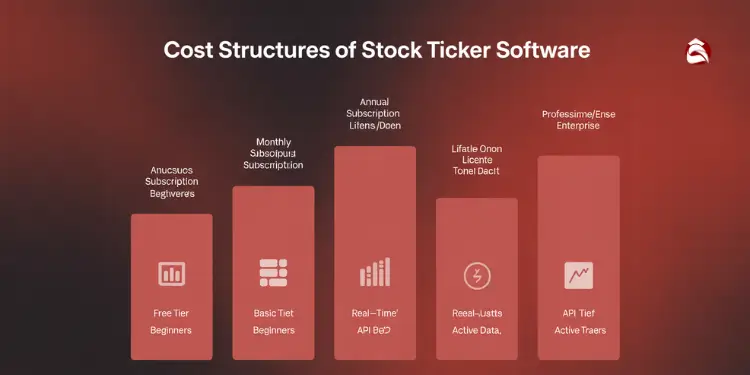
Understanding the cost structures of stock ticker software is essential for beginners to budget effectively and choose the right plan. Most platforms offer subscription-based models with monthly or annual billing, while some provide lifetime licenses for a one-time payment, each with varying levels of access to features and data.
| Pricing Model | Typical Cost Range | Features Included | Best For |
|---|---|---|---|
| Free Tier | $0 | Basic charting, delayed data, limited indicators | Beginners testing platforms |
| Monthly Subscription | $10-$50/month | Real-time data, advanced indicators, basic alerts | Active traders needing flexibility |
| Annual Subscription | $100-$500/year | All monthly features + priority support, additional tools | Committed traders seeking savings |
| Lifetime License | $300-$1500 one-time | Permanent access to current features, no recurring fees | Long-term users wanting to avoid subscriptions |
| Professional/Enterprise | $500-$2000+/year | Institutional-grade data, API access, custom alerts | Advanced traders and institutions |
Studies show that software spending can deliver a 41% annualized ROI, which is 2.4x the typical corporate hurdle rate. Lifetime licenses can be cost-effective for long-term traders, offering permanent access without recurring fees. Ref.: “Cloud Ratings. (2025). The ROI Of IT + Software.” [!]
“Related Articles: Best Zero Budgeting Tools for Hassle-Free Planning“
Editor picks of novice friendly software
When selecting novice-friendly software, consider editor picks and user reviews. Platforms like TradingView, Finviz, Webull, and Tradestation are often recommended for their user-friendly interfaces and comprehensive analysis tools. These platforms offer the best charting capabilities, real-time market data, and stock screeners available, making them excellent choices for beginners. User friendliness is the key aspect. Each offers unique options to track stocks and set alerts. Finviz’s stock screener is a great way to start.
Research indicates that UI/UX design in trading apps is instrumental in creating user-centric platforms that foster engagement, trust, and ultimately trading success. Platform usability directly impacts beginner retention rates. Ref.: “Ossmium Team. (2024). The Impact of UI/UX Design on the Success of Trading Fintech Apps.” [!]
“Explore More: How to Avoid Overspending on House Purchase Budget“












